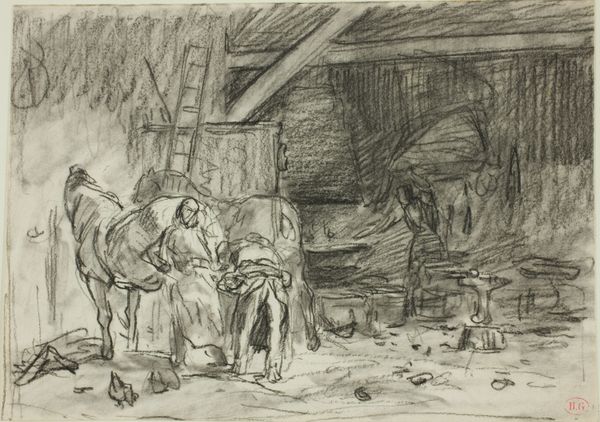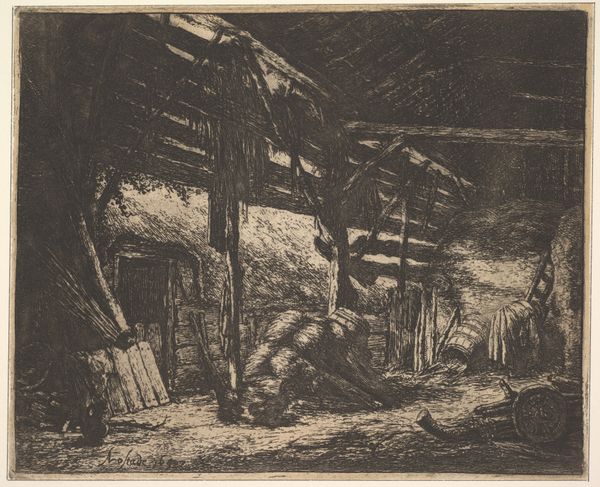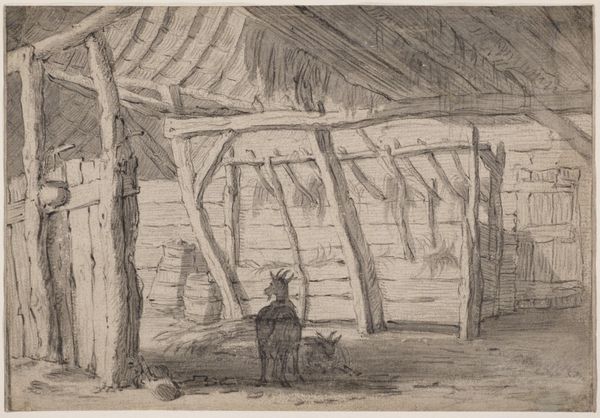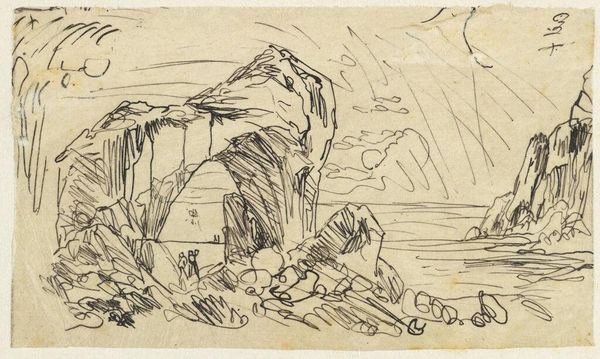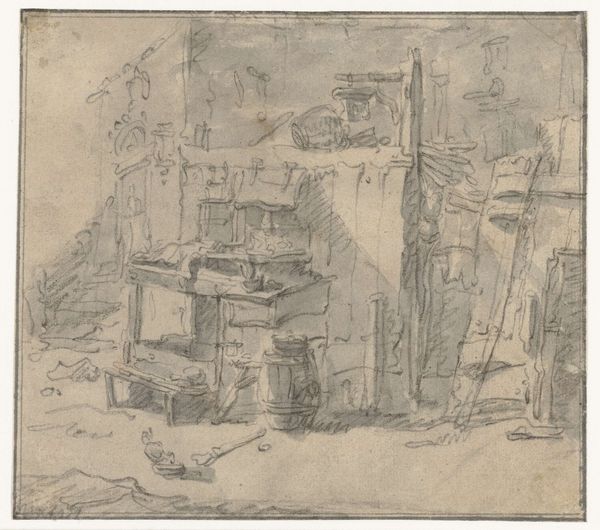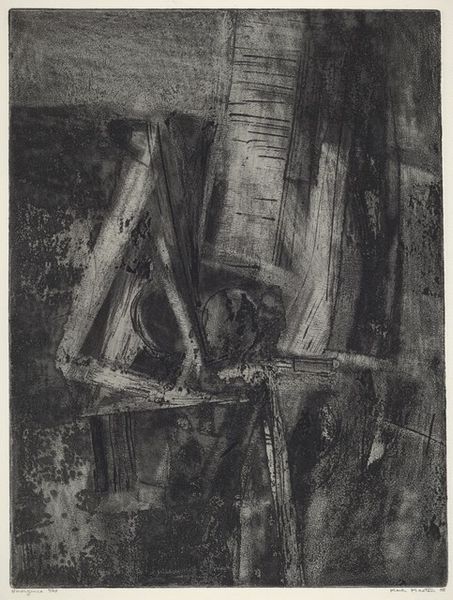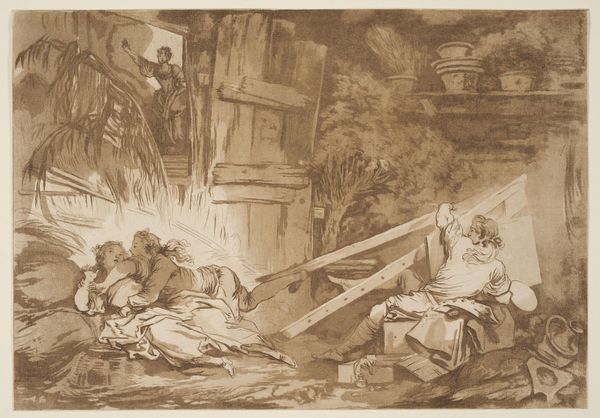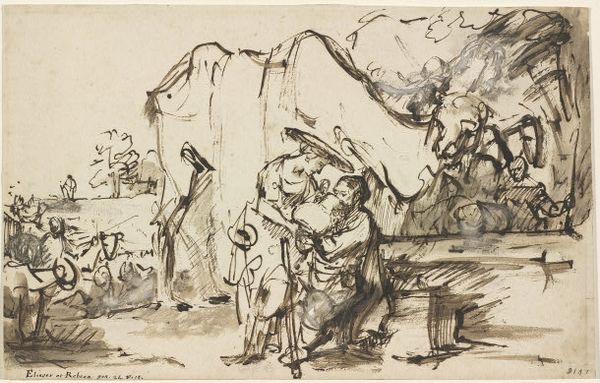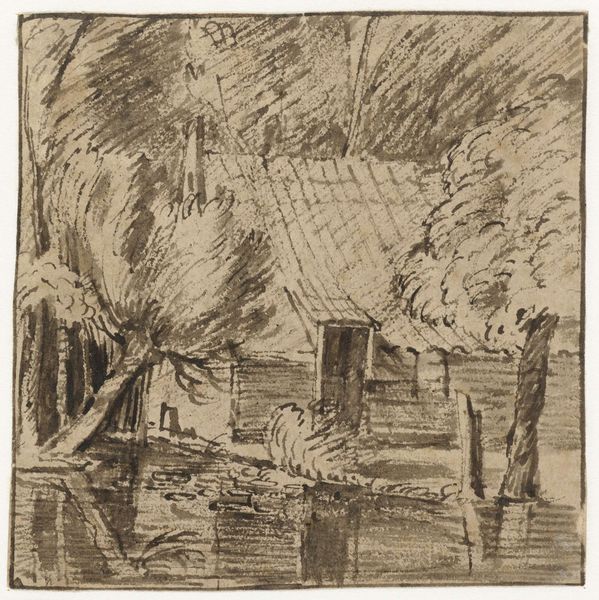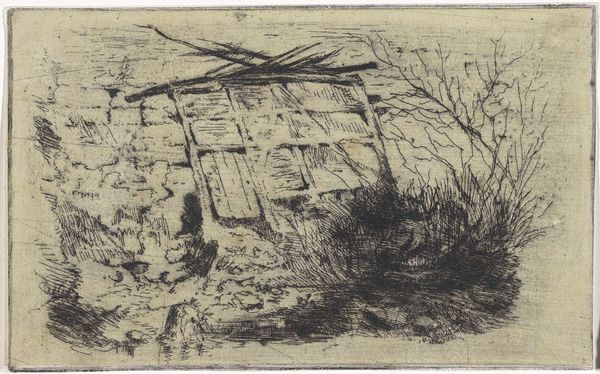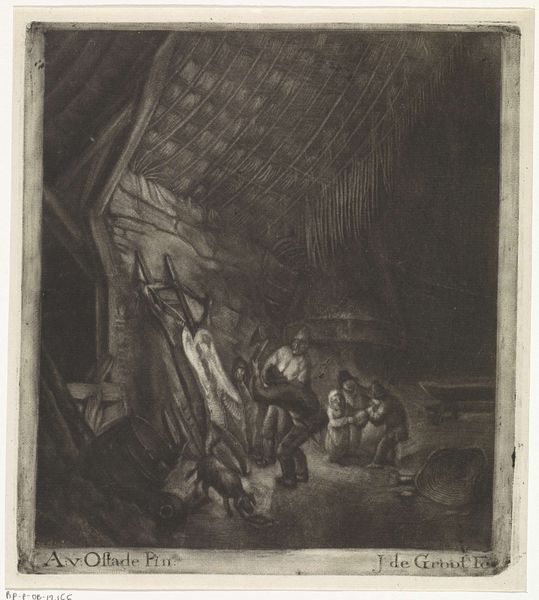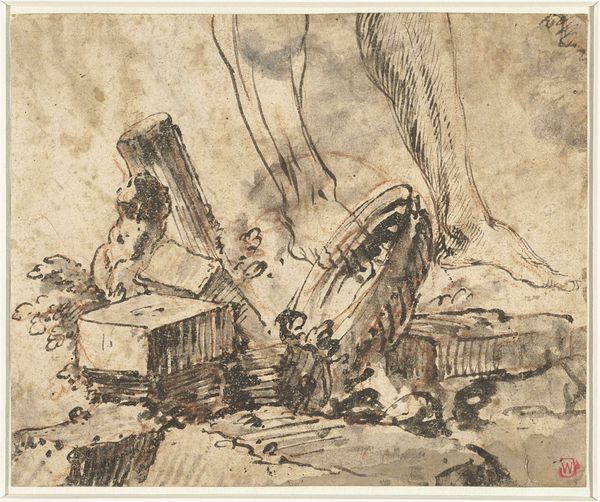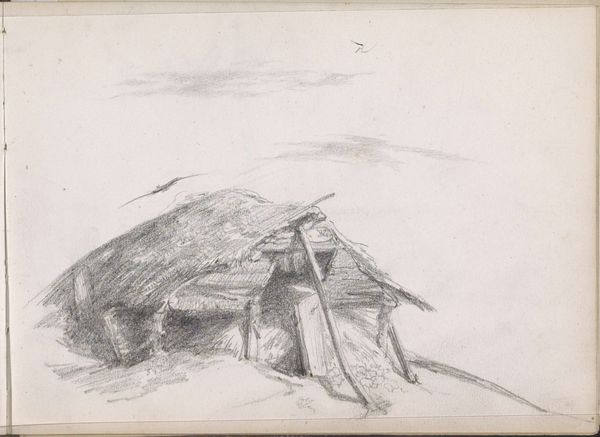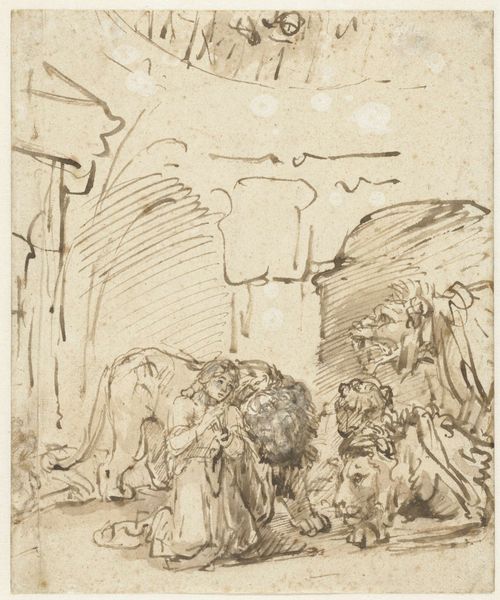
drawing, ink
#
drawing
#
baroque
#
pencil sketch
#
landscape
#
figuration
#
ink
#
ink drawing experimentation
#
watercolour illustration
#
genre-painting
Dimensions: height 153 mm, width 182 mm
Copyright: Rijks Museum: Open Domain
Rembrandt van Rijn made this drawing, ‘A Cow in a Shed,’ sometime in the 17th century, with pen and brown ink and brown wash. The Dutch Golden Age was a period of unprecedented economic growth and cultural flourishing for the Netherlands. Rembrandt, the son of a miller, made several drawings of cows. This grounding in the everyday provides a window into a society undergoing significant transformations. Think about the role of agriculture in the Netherlands during this time. As the country became a global trading power, the labor and resources of the countryside fueled its expansion. What does it mean to center a cow, an animal typically overlooked in grand narratives of history? This drawing invites us to consider the lives and labor that often remain unseen. The cow is not merely an object, but a being with its own presence and dignity. It encourages us to look closely at the world around us, to recognize the value and beauty in the ordinary.
Comments
rijksmuseum about 2 years ago
⋮
This cow eating hay is effectively framed by the wall and roof of the shed and the wheelbarrow in the foreground. A 1656 inventory of Rembrandt’s possessions specifically mentions that he drew animals from life. Is this also the case for this stylized composition? The presence of the peasant at left, who looks straight out at the draughtsman, in fact suggests this.
Join the conversation
Join millions of artists and users on Artera today and experience the ultimate creative platform.
